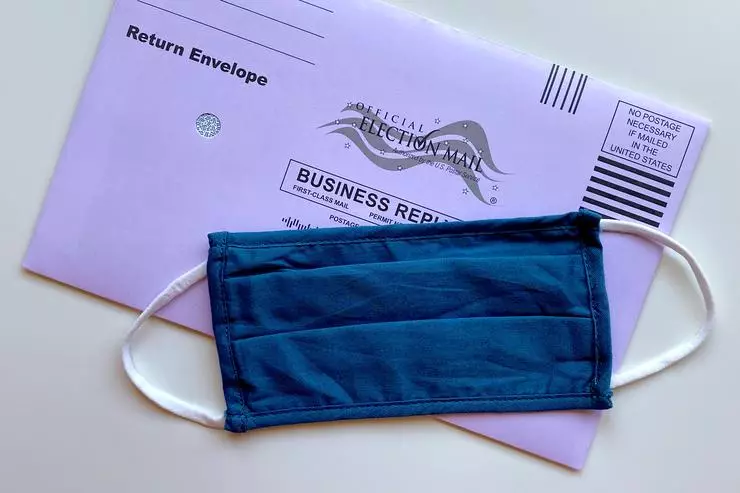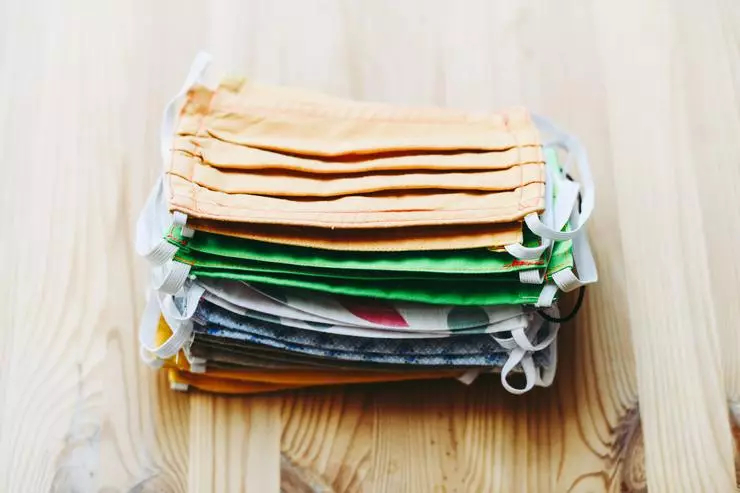To limit the transmission of COVID-19, disease control and prevention centers (CDC) recommend using a tissue mask when you are in public places. But why is it? Studies have shown that SARS-COV-2, the virus that causes COVID-19 can be transmitted between people, even if the person who has it has no symptoms. There are some simple ways at home to sew a fabric face mask with a filter:
What you need
To sew a facial filter mask, you will need the following materials:
Cotton fabric. Try using tight cotton fabric. Some examples include fabric for quilting, t-shirt fabric or tissue with plenty of threads from pillowcases or sheets.
Elastic material. If you do not have gum, you can use some elastic homemade items, such as hair gum. When there is nothing at hand, even shoelaces will be useful.

When there is nothing at hand, even the laces will be useful
Photo: unsplash.com.
Filter: CDC does not propose to use a filter, but some believe that it provides greater protection. Coffee filters have many at home. You can also use the parts of the HEPA vacuum bag or air conditioner filter (look for products without fiberglass).
Sewing materials: These include scissors and sewing machine or needle with thread.
How to use face mask with filter
Use the mask, going out, especially if you are going to be close to other people. Here are some examples when wearing a mask:
Buying products or other essential items
Hike in Pharge
Visit doctor
Before going out into the mask, make sure that she is:
Securely fixed with ear loops and screeds
Tight but comfortable sits
Makes it easy to breathe
Consists of at least two layers of fabric
Try not to touch the mask until you wear it. If you need to touch the mask or correct it while it is on you, do not forget to wash your hands right away.
To remove the mask:
Make sure you have clean hands.
Remove the mask with loops or ties. Do not touch the front part.
During the removal, do not touch your mouth, nose or eyes.
After removing the mask thoroughly wash your hands.
Other important things to remember face masks
Fabric face masks are recommended to the population instead of using surgical masks and respirators N95. This is due to the fact that these two types of masks are in limited quantities and are necessary for medical professionals and rapid response services. Plus, due to a rare change of masks on your skin, acne may appear - do not forget about it and keep a couple of replacements in stock.

Because of the rare change of masks on your skin, acne may appear - do not forget about it and keep a couple of replacements in stock
Photo: unsplash.com.
Homemade face mask is not as effective as other types of masks
In the 2008 study, N95 respirators, surgical masks and self-made face masks were compared. It was found that the N95 respirators provide maximum protection against aerosols, and home masks are the smallest. But it is better a self-made mask than nothing at all. In one study of 2013, 21 participants made a self-made mask for the face of a T-shirt. Then these homemade masks were compared with surgical masks by their ability to block bacterial and viral aerosols. Both types of masks significantly reduced the penetration of these aerosols, and surgical masks turned out to be more efficient. Researchers came to the conclusion that, although the home masks are less effective, their use may be more useful than their absence.
How to care for a facial mask with a filter
It is important to clean the fabric face mask after each use. This can be done using the sparing mode of the washing machine or carefully erased by hand with warm soap water. After washing, dry the mask in the drying machine on a strong fire. If you do not have it, hang on the battery or dry the hairdryer. Before washing the masks, make sure that you removed and recycled the filter. After the mask is completely dry, you can put a new filter in it. If the filter is worst after replacing, throw it away and put a new one.
